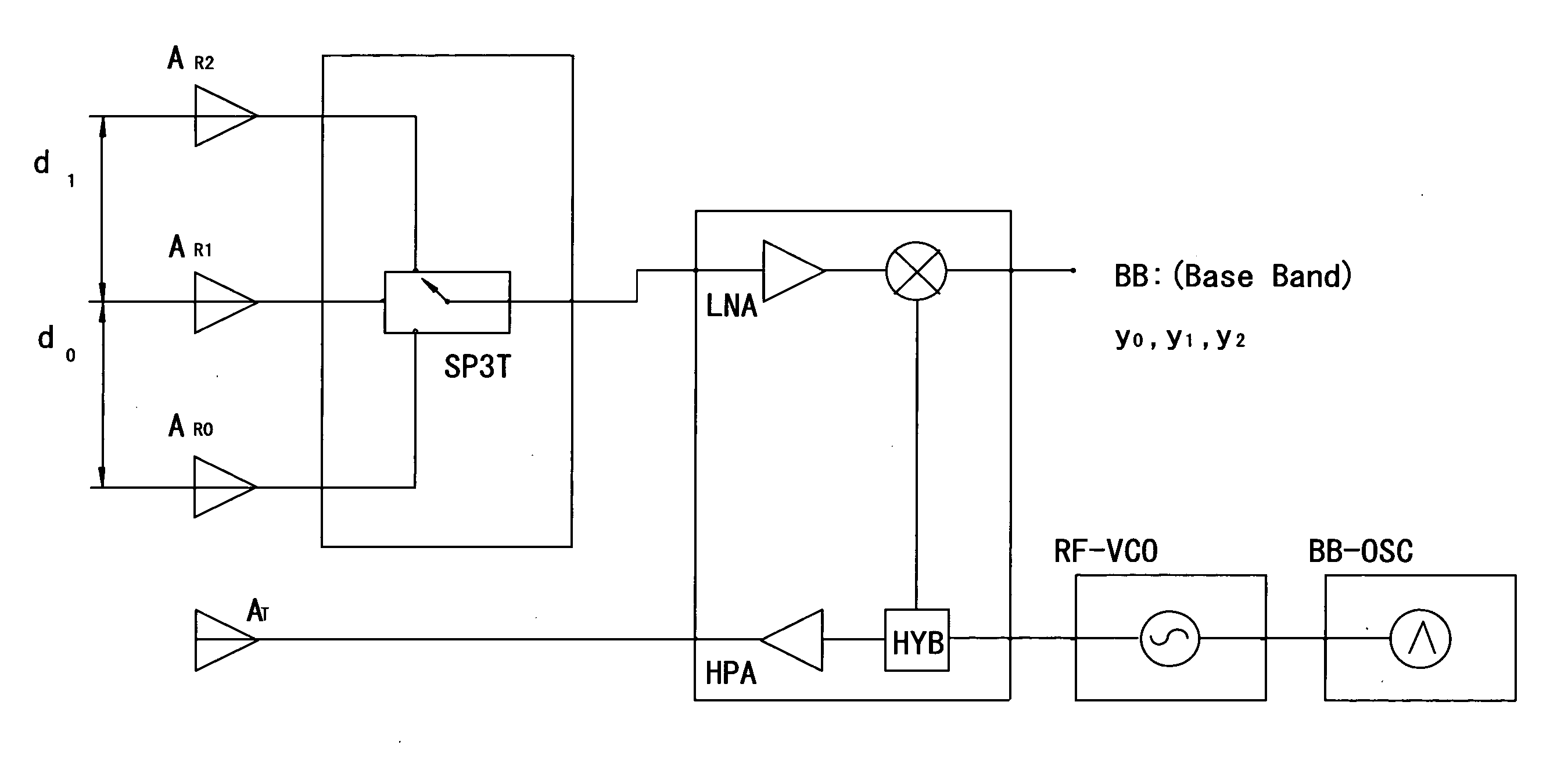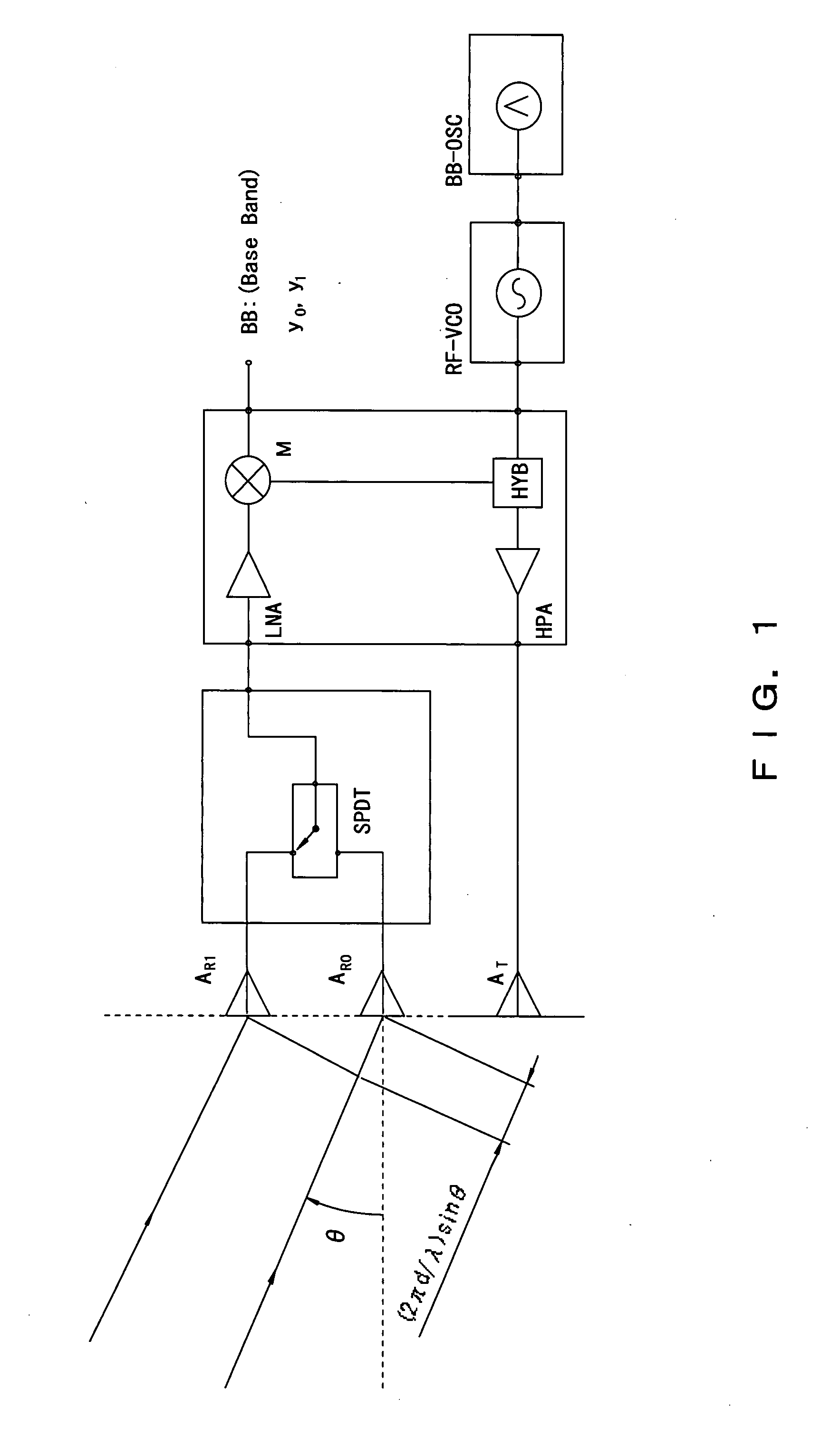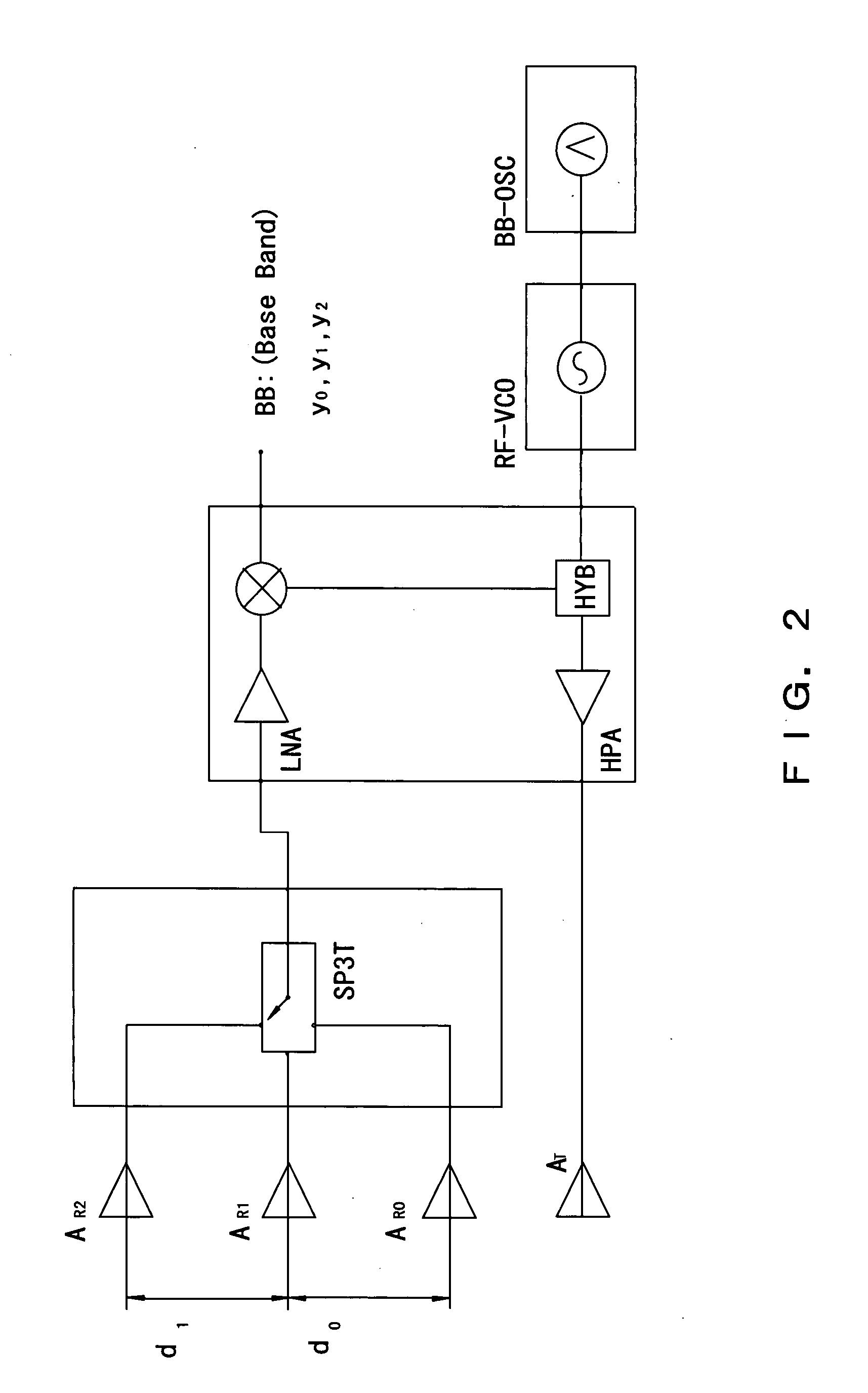Incoming direction estimation apparatus
- Summary
- Abstract
- Description
- Claims
- Application Information
AI Technical Summary
Benefits of technology
Problems solved by technology
Method used
Image
Examples
Embodiment Construction
[0029] While the present invention is applicable to other incoming direction estimation apparatuses such as a sonar in lieu of a mono-pulse radar described above, a description herein exemplifies a mono-pulse radar in terms of a comparison of the conventional technique, and exemplifies the case of N=3, where N is the number of sensors.
[0030]FIG. 2 is a diagram of an outline comprisal of a mono-pulse radar incoming direction estimation apparatus according to a preferred embodiment of the present invention.
[0031] In the showing of FIG. 2, the same component sign is assigned to the same constituent component as one shown in FIG. 1 and the description thereof is omitted here.
[0032] The configuration shown by FIG. 2 is equipped with three reception antennas. A switch SP3T (single-pole, 3-throw) changes over radar wave reception signals from the three antennas sequentially and transmits them to a later stage.
[0033] Where defining antenna intervals of three antennas (A0, A1 and A2) as:...
PUM
 Login to View More
Login to View More Abstract
Description
Claims
Application Information
 Login to View More
Login to View More - R&D
- Intellectual Property
- Life Sciences
- Materials
- Tech Scout
- Unparalleled Data Quality
- Higher Quality Content
- 60% Fewer Hallucinations
Browse by: Latest US Patents, China's latest patents, Technical Efficacy Thesaurus, Application Domain, Technology Topic, Popular Technical Reports.
© 2025 PatSnap. All rights reserved.Legal|Privacy policy|Modern Slavery Act Transparency Statement|Sitemap|About US| Contact US: help@patsnap.com



